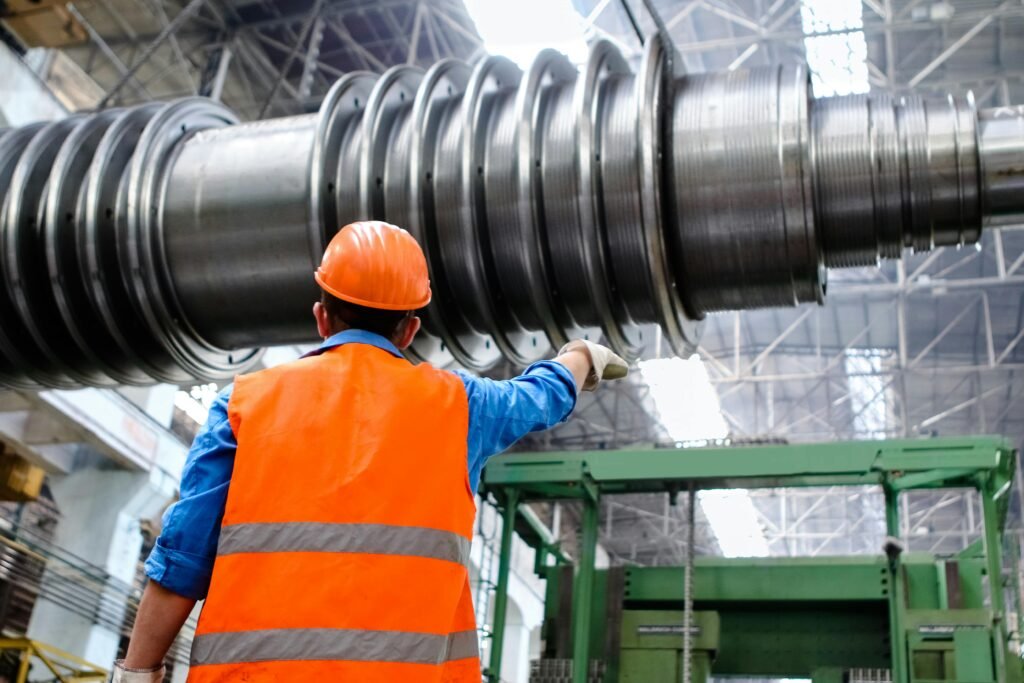If you’re looking to improve the performance of your firearms, then you’ve come to the right place. In this article, we’ll explore how top-notch solvents and lubricants can be the key to unlocking the full potential of your beloved guns. Whether you’re a seasoned shooter or just starting out, investing in high-quality solvents and lubricants can make all the difference in terms of accuracy, functionality, and overall longevity of your firearms. Let’s take a closer look at why using the right products is crucial and how they can help you take your shooting experience to the next level.

This image is property of images.pexels.com.
Importance of Solvents and Lubricants
When it comes to firearms, solvents and lubricants play a crucial role in enhancing performance, preventing rust and corrosion, and reducing friction and wear. Properly maintaining your firearm with the right solvents and lubricants can significantly extend its lifespan and ensure its optimal functionality.
Enhancing Firearm Performance
Using high-quality solvents and lubricants can greatly enhance the performance of your firearm. Over time, dirt, debris, and residue can accumulate in the barrel, chamber, and other internal parts of your firearm, hampering its accuracy and overall performance. By regularly cleaning your firearm with an effective solvent, you can remove these contaminants and restore the smooth operation of your firearm. Additionally, lubricants can be applied to moving parts to reduce friction and ensure smooth, reliable cycling of the firearm.
Preventing Rust and Corrosion
One of the biggest threats to firearms is rust and corrosion. Moisture, humidity, and exposure to harsh environmental conditions can cause metal components to rust and corrode, compromising both the appearance and functionality of the firearm. By using the right solvents and lubricants, you can provide a protective barrier against moisture and corrosion, keeping your firearm in pristine condition for years to come.
Reducing Friction and Wear
Constant use of a firearm can lead to friction and wear on various components, such as the slide, bolt, and trigger mechanism. This can result in sluggish operation, decreased accuracy, and even potential malfunctions. By applying lubricants to these moving parts, you can significantly reduce friction and wear, ensuring smooth operation and prolonging the lifespan of your firearm.
Types of Solvents
There are different types of solvents available, each designed for specific cleaning purposes. Understanding the various types of solvents can help you choose the right one for your firearm maintenance needs.
Powder Solvents
Powder solvents are primarily used to remove carbon and powder residue from gun barrels. They are highly effective in breaking down and loosening stubborn build-up, allowing you to easily clean and maintain your firearm. Powder solvents are typically applied using cleaning patches or brushes, and they help restore the accuracy and reliability of your firearm by removing fouling.
Copper Solvents
Copper solvents are specifically formulated to remove copper fouling from the bore of your firearm. Copper fouling can accumulate over time, especially in rifles, and can negatively affect accuracy. Copper solvents are excellent at penetrating the bore and breaking down copper deposits, leaving your firearm’s barrel clean and ready for use.
Lead Solvents
For firearms that use lead ammunition, lead solvents are essential for proper cleaning. Lead fouling can accumulate in the bore and other parts of the firearm, leading to decreased accuracy and potential safety issues. Lead solvents are effective at dissolving and removing lead fouling, ensuring optimal performance and safety.
Carbon Solvents
Carbon solvents are specially designed to remove carbon deposits from various parts of the firearm, such as the bolt, gas system, and slide. Carbon fouling can accumulate over time and hinder the smooth operation of your firearm. Carbon solvents help dissolve and break down carbon build-up, allowing you to easily clean and maintain your firearm’s internal components.
Characteristics of Top-Notch Solvents
Not all solvents are created equal, and it’s important to choose top-notch solvents that possess specific characteristics. When selecting a solvent for your firearm cleaning needs, look for the following attributes:
Effective Degreasing and Cleaning Properties
A high-quality solvent should be able to effectively dissolve and remove dirt, debris, carbon, copper, and other contaminants from your firearm. It should penetrate and loosen stubborn fouling, making it easier to clean and restore your firearm’s performance.
Non-toxic and Eco-friendly
Considering the safety of yourself, others, and the environment, it’s essential to choose solvents that are non-toxic and eco-friendly. Non-toxic solvents reduce health risks associated with exposure, and eco-friendly options minimize the impact on the environment.
Fast Evaporation Rate
A solvent with a fast evaporation rate makes cleaning more efficient. It allows you to apply the solvent, let it work its magic, and then easily wipe away the dissolved contaminants without leaving behind any residue.
Leaves No Residue
The ideal solvent should evaporate completely and leave no residue behind. Residue can attract dirt and debris, compromising the cleanliness and functionality of your firearm. A solvent that leaves no residue ensures a clean and well-maintained firearm.
Types of Lubricants
Lubricants are essential for reducing friction, preventing wear, and ensuring the smooth operation of your firearm. Here are the different types of lubricants commonly used:
Gun Oil
Gun oil is the most commonly used lubricant for firearms. It is typically applied to moving parts, such as the slide, bolt, and trigger mechanism, to reduce friction and ensure smooth operation. Gun oil is available in different viscosities to suit various firearms and operating conditions.
Grease
Grease is a thicker lubricant that provides long-lasting lubrication and excellent boundary protection. It is commonly used in high-pressure areas and on parts that undergo heavy usage, such as the bolt carrier group. Grease stays in place even under extreme conditions, offering superior lubrication and corrosion protection.
Dry Lubricants
Dry lubricants, also known as dry films, are lubricants that do not leave an oily or greasy residue. They are commonly used in areas where traditional lubricants may attract dirt and debris. Dry lubricants, such as molybdenum disulfide or graphite, provide a low-friction coating that prevents wear and ensures smooth operation.

This image is property of images.pexels.com.
Desired Properties of Quality Lubricants
When choosing a lubricant for your firearm, ensure it possesses the following properties to guarantee optimal performance and longevity:
Extreme Pressure and Heat Resistance
Firearms, especially semi-automatics and rifles, can generate high pressures and temperatures during operation. A quality lubricant should be able to withstand these extreme conditions without breaking down, dripping, or evaporating. It should maintain its integrity and lubricating properties even under demanding circumstances.
Long-lasting and Durable
Durability is a key characteristic of a quality lubricant. It should be long-lasting and capable of providing effective lubrication for an extended period. A lubricant that remains intact even after prolonged usage ensures your firearm’s moving parts are well-protected and functioning smoothly.
Water and Moisture Resistance
Firearms are often exposed to moisture and environmental conditions that can lead to rust and corrosion. A quality lubricant should have excellent water and moisture resistance properties to prevent these issues. It should create a protective barrier that repels moisture, keeping your firearm safe from potential damage.
Finding the Right Solvent and Lubricant
Choosing the right solvent and lubricant for your firearm maintenance can be a daunting task. However, by considering a few factors, you can make an informed decision:
Considering the Firearm Type
Different solvents and lubricants may be more suitable for specific types of firearms. For example, rifles may require a copper solvent to combat copper fouling, while handguns may benefit from a carbon solvent for removing carbon deposits. Consider the unique cleaning needs of your firearm and select the solvents and lubricants that best meet those requirements.
Reading Manufacturer Recommendations
Firearm manufacturers often provide recommendations on the solvents and lubricants that work best with their products. Take the time to review these recommendations and follow them accordingly. Manufacturers’ insights can provide valuable guidance on maintaining your firearm’s performance and longevity.
Seeking Expert Advice
If you are unsure about which solvents and lubricants to use, don’t hesitate to seek advice from experts in the field. Gun shops, firearm instructors, and experienced shooters can offer valuable recommendations and insights based on their expertise and personal experiences.

This image is property of images.pexels.com.
Application Methods and Techniques
Properly applying solvents and lubricants is crucial for achieving optimal results in firearm maintenance. Consider the following application methods and techniques:
Disassembly and Cleaning
Before applying solvents and lubricants, it is important to disassemble your firearm and clean it thoroughly. This allows the solvents to penetrate and clean hard-to-reach areas effectively. Follow proper disassembly procedures outlined in your firearm’s manual, and clean each part meticulously to ensure a thorough maintenance process.
Proper Lubrication Points
Identify the specific points in your firearm that require lubrication. These areas typically include the slide rails, trigger, hammer, and other moving components. Apply a small amount of lubricant to each lubrication point, ensuring even coverage and smooth operation.
Balancing Amount and Frequency
Finding the right balance between the amount of lubricant applied and the frequency of application is important. Applying too much lubricant can attract dirt and debris, while insufficient lubrication can lead to excessive wear. Follow the manufacturer’s recommendations and adjust based on the specific needs of your firearm.
Common Mistakes to Avoid
To ensure the longevity and optimal performance of your firearm, it’s important to avoid common mistakes in solvents and lubricants usage. Here are a few common pitfalls to steer clear of:
Using Improper Solvents and Lubricants
Using solvents and lubricants that are not specifically designed for firearms can lead to detrimental effects. Automotive or household cleaning products may contain chemicals that can damage the finishes, seals, and other components of your firearm. Stick to solvents and lubricants specifically formulated for firearms to avoid any potential harm.
Over-lubrication or Under-lubrication
Applying too much lubricant can attract dirt and debris, leading to malfunctions and decreased performance. Conversely, inadequate lubrication can cause excessive friction and wear. Find the right balance by applying a sufficient amount of lubricant at the appropriate lubrication points.
Neglecting Regular Maintenance
Regular maintenance is key to preserving the performance and longevity of your firearm. Neglecting routine cleaning, lubrication, and inspection can result in the accumulation of debris, rust, and wear. Make a habit of regular maintenance to ensure your firearm is always in top condition.
Solvent and Lubricant Maintenance
Properly maintaining your solvents and lubricants is just as important as maintaining your firearm. Consider the following practices to ensure their effectiveness:
Proper Storage to Avoid Contamination
Solvents and lubricants should be stored in a cool, dry place to prevent contamination. Exposure to high temperatures, direct sunlight, or moisture can degrade the quality and effectiveness of these products. Keep them tightly sealed in their original containers to preserve their integrity.
Checking Expiration Dates
Solvents and lubricants have a limited shelf life, so it’s important to check their expiration dates. Expired products may not provide the desired cleaning or lubricating properties, potentially compromising the maintenance of your firearm. Discard any solvents or lubricants that have exceeded their expiration dates.
Periodic Cleaning and Reapplication
Solvents and lubricants can become contaminated over time, especially after multiple uses. To ensure their effectiveness, periodically clean the containers, applicators, and brushes used for solvents and lubricants. This helps prevent contamination and ensures that only clean and uncontaminated products are used on your firearm.
Final Thoughts
Investing in quality solvents and lubricants is essential for maintaining and enhancing the performance of your firearm. Regular cleaning with effective solvents removes contaminants, while lubricating with top-notch products reduces friction and wear. By selecting the right solvents and lubricants, following recommended application methods, and avoiding common mistakes, you can achieve optimal performance, longevity, and reliability from your firearm. Remember, regular maintenance is key, providing you with peace of mind and a firearm that is always ready for action.
